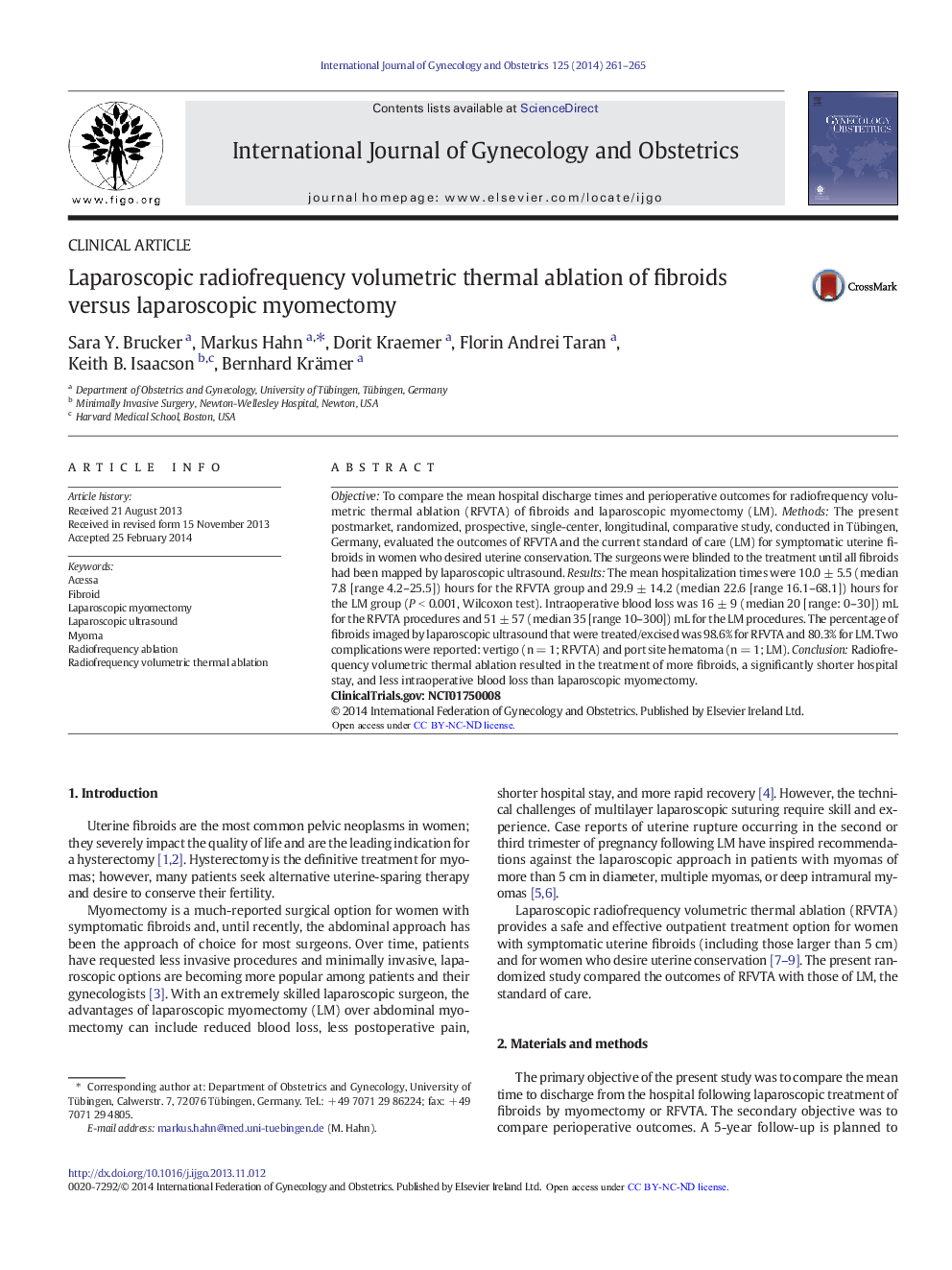| Article ID | Journal | Published Year | Pages | File Type |
|---|---|---|---|---|
| 6186963 | International Journal of Gynecology & Obstetrics | 2014 | 5 Pages |
ObjectiveTo compare the mean hospital discharge times and perioperative outcomes for radiofrequency volumetric thermal ablation (RFVTA) of fibroids and laparoscopic myomectomy (LM).MethodsThe present postmarket, randomized, prospective, single-center, longitudinal, comparative study, conducted in Tübingen, Germany, evaluated the outcomes of RFVTA and the current standard of care (LM) for symptomatic uterine fibroids in women who desired uterine conservation. The surgeons were blinded to the treatment until all fibroids had been mapped by laparoscopic ultrasound.ResultsThe mean hospitalization times were 10.0 ± 5.5 (median 7.8 [range 4.2-25.5]) hours for the RFVTA group and 29.9 ± 14.2 (median 22.6 [range 16.1-68.1]) hours for the LM group (P < 0.001, Wilcoxon test). Intraoperative blood loss was 16 ± 9 (median 20 [range: 0-30]) mL for the RFVTA procedures and 51 ± 57 (median 35 [range 10-300]) mL for the LM procedures. The percentage of fibroids imaged by laparoscopic ultrasound that were treated/excised was 98.6% for RFVTA and 80.3% for LM. Two complications were reported: vertigo (n = 1; RFVTA) and port site hematoma (n = 1; LM).ConclusionRadiofrequency volumetric thermal ablation resulted in the treatment of more fibroids, a significantly shorter hospital stay, and less intraoperative blood loss than laparoscopic myomectomy.ClinicalTrials.gov: NCT01750008
